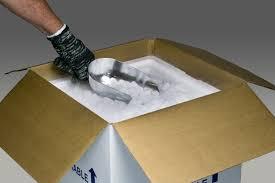Dry Ice Blasting: A Modern Approach to Industrial Cleaning
Introduction
Industrial cleaning is an essential part of maintaining machinery, improving efficiency, and ensuring product quality. Traditional methods often rely on water, chemicals, or abrasive materials, which can be time-consuming, messy, or even damaging. Dry ice blasting is a modern alternative that offers a cleaner, faster, and more environmentally responsible approach. By using solid carbon dioxide pellets, this technique effectively removes contaminants without harming surfaces or leaving behind waste.
What Is Dry Ice Blasting?
Dry ice blasting is a cleaning process that involves shooting dry ice pellets—frozen carbon dioxide—at high speeds onto surfaces using compressed air. When these pellets strike a surface, they rapidly sublimate, turning directly from solid to gas. This quick transformation creates a mini-explosion at the point of contact, lifting away dirt, grime, paint, grease, or other unwanted substances.
The process is dry, non-abrasive, non-conductive, and non-toxic. Because the dry ice disappears into the air after impact, there is no residue or moisture left behind. This makes dry ice blasting a suitable choice for cleaning sensitive equipment, electrical components, and food processing areas.
How It Works
Dry ice blasting cleans in three main ways: kinetic energy, thermal shock, and gas expansion.
First, the force of the dry ice pellets hitting the surface dislodges contaminants. Second, the extreme cold of the dry ice—around minus 78 degrees Celsius—makes most substances brittle, which helps break the bond between the surface and the material being removed. Third, the dry ice sublimates into gas upon impact, expanding quickly and creating a micro-explosion that lifts debris away from the surface.
Unlike sandblasting or chemical cleaning, dry ice blasting does not leave behind any blasting media or hazardous waste. The only cleanup required is removing the dislodged contaminants, which is usually minimal.
Applications in Industry
Dry ice blasting is used in a wide range of industries, each benefiting from its unique advantages.
In the food and beverage sector, dry ice blasting is commonly used to clean mixers, ovens, conveyor belts, and packaging machines. Since no chemicals or water are involved, it complies with food safety standards while allowing cleaning to be done without halting production.
Automotive manufacturers and restoration shops use this method to clean engine parts, molds, paint booths, and undercarriages. It effectively removes grease, oil, adhesives, and rust without damaging the surface underneath.
In electronics and power generation, the process is ideal for cleaning switchboards, turbines, generators, and control panels. Because it does not conduct electricity or introduce moisture, it reduces the risk of damage and improves reliability.
Dry ice blasting is also used in printing, aerospace, plastics manufacturing, and even historical restoration. It removes ink, soot, mold, and other residues from delicate surfaces without erosion or alteration.
Advantages of Dry Ice Blasting
There are several reasons why businesses are switching to dry ice blasting for their cleaning needs.
One of the most significant benefits is that it is non-abrasive. This means surfaces are not worn down during cleaning, which is especially important for precision tools, molds, and delicate equipment.
The process is completely dry, which eliminates the risk of rust, corrosion, or electrical short circuits. It also allows machines to be cleaned while still in operation, reducing downtime and improving productivity.
There is no secondary waste. Since dry ice sublimates, there is no media to collect or dispose of, unlike sandblasting or chemical methods that generate leftover grit or sludge.
Dry ice blasting is safe for both people and the environment. The carbon dioxide used is usually recycled from industrial emissions, making the process carbon-neutral. It also eliminates the need for hazardous chemicals, improving workplace safety and reducing regulatory concerns.
Safety and Limitations
While dry ice blasting is a safe and effective method, it does require proper handling and precautions.
Operators must wear personal protective equipment, including gloves, eye protection, and hearing protection, due to the noise and cold temperatures involved. Proper training is essential to ensure the equipment is used correctly and safely.
Ventilation is crucial, especially in enclosed spaces. As dry ice sublimates, it releases carbon dioxide gas, which can displace oxygen. Using the process in well-ventilated areas or with gas monitoring systems helps maintain a safe environment.
Dry ice blasting may not be suitable for removing very thick or heavy buildup without some pre-treatment. It can also involve higher upfront equipment costs, which may be a consideration for smaller businesses.
Conclusion
Dry ice blasting offers a powerful and efficient alternative to conventional industrial cleaning methods. It is fast, clean, environmentally friendly, and gentle on equipment. With its ability to reduce downtime, eliminate hazardous waste, and meet strict industry standards, dry ice blasting is becoming an essential tool in modern maintenance and operations. As companies continue to seek smarter and more sustainable ways to clean, this technology is leading the way toward a safer and more efficient future.

